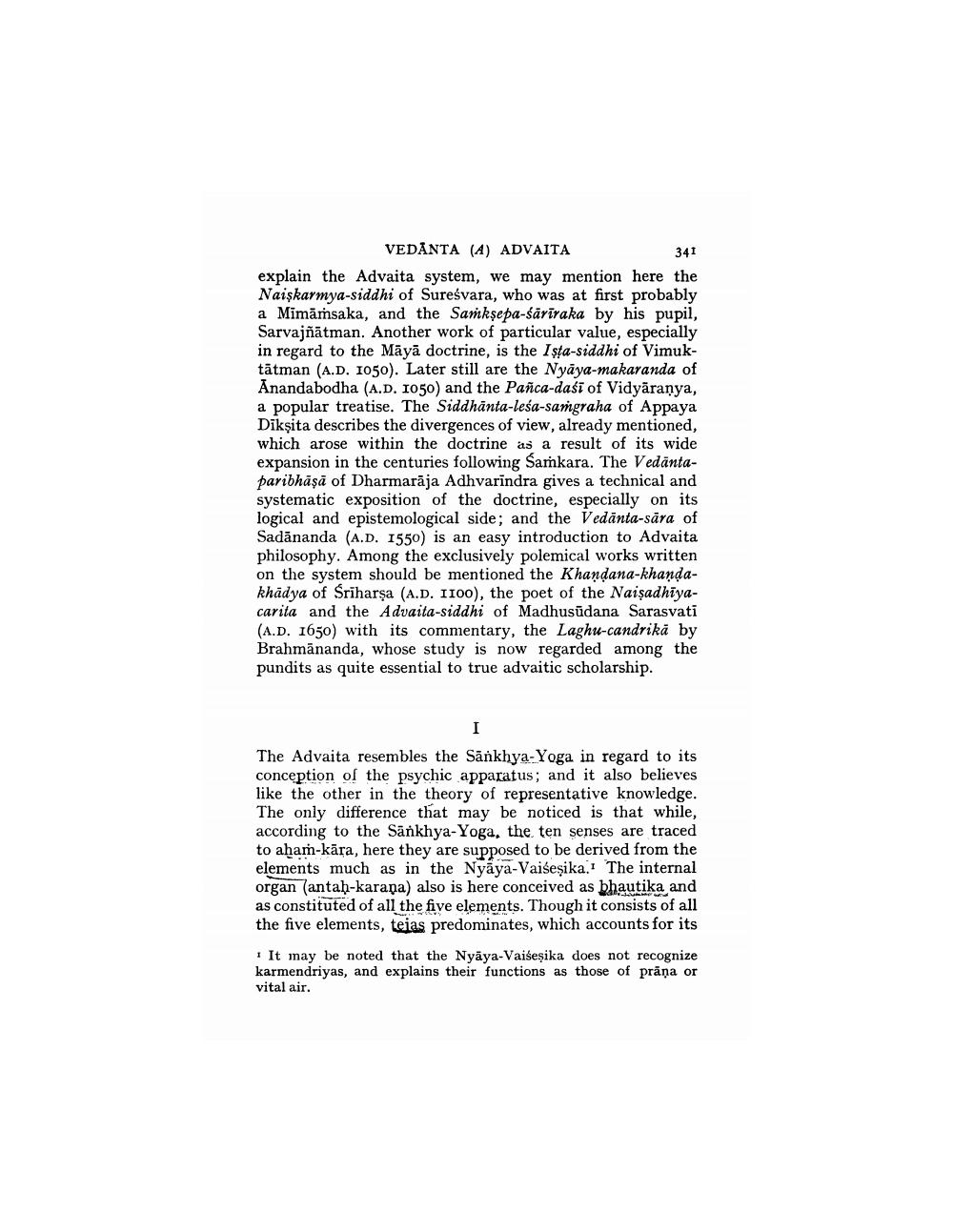________________
VEDANTA (4) ADVAITA
341
explain the Advaita system, we may mention here the Naişkarmya-siddhi of Sureśvara, who was at first probably a Mimāṁsaka, and the Samkṣepa-sariraka by his pupil, Sarvajäätman. Another work of particular value, especially in regard to the Māyā doctrine, is the Ista-siddhi of Vimuktātman (A.D. 1050). Later still are the Nyaya-makaranda of Anandabodha (A.D. 1050) and the Pañca-dasi of Vidyaranya, a popular treatise. The Siddhanta-leśa-samgraha of Appaya Dikşita describes the divergences of view, already mentioned, which arose within the doctrine as a result of its wide. expansion in the centuries following Samkara. The Vedantaparibhāṣā of Dharmaraja Adhvarindra gives a technical and systematic exposition of the doctrine, especially on its logical and epistemological side; and the Vedanta-săra of Sadananda (A.D. 1550) is an easy introduction to Advaita philosophy. Among the exclusively polemical works written on the system should be mentioned the Khandana-khandakhadya of Sriharṣa (A.D. 1100), the poet of the Naiṣadhiyacarita and the Advaita-siddhi of Madhusudana Sarasvati (A.D. 1650) with its commentary, the Laghu-candrika by Brahmananda, whose study is now regarded among the pundits as quite essential to true advaitic scholarship.
I
The Advaita resembles the Sankhya-Yoga in regard to its conception of the psychic apparatus; and it also believes like the other in the theory of representative knowledge. The only difference that may be noticed is that while, according to the Sankhya-Yoga, the ten senses are traced to aham-kāra, here they are supposed to be derived from the elements much as in the Nyaya-Vaiśeşika. The internal organ (antah-karana) also is here conceived as bhautika and as constituted of all the five elements. Though it consists of all the five elements, teias predominates, which accounts for its
It may be noted that the Nyaya-Vaiśeşika does not recognize karmendriyas, and explains their functions as those of prāna or vital air.




